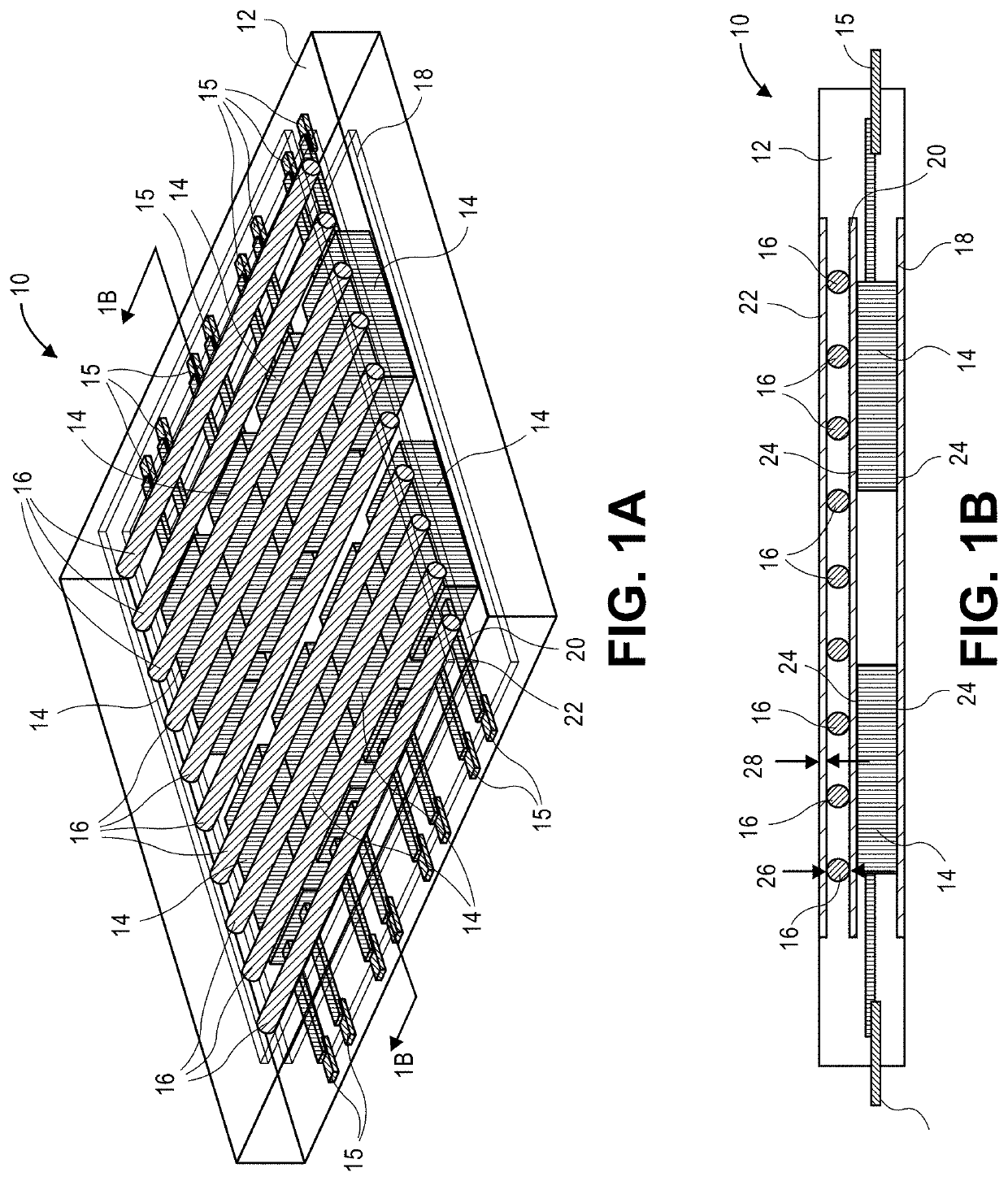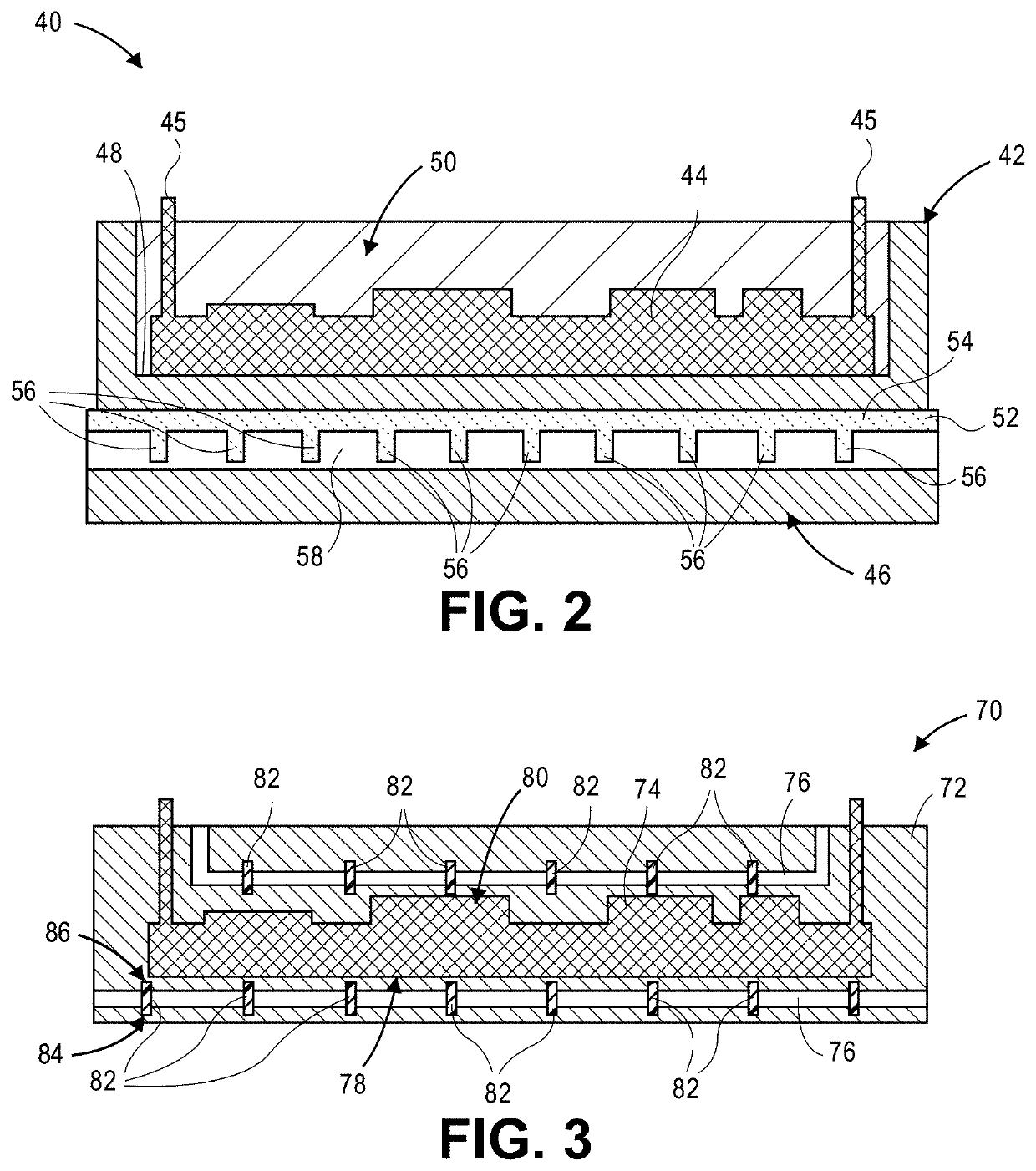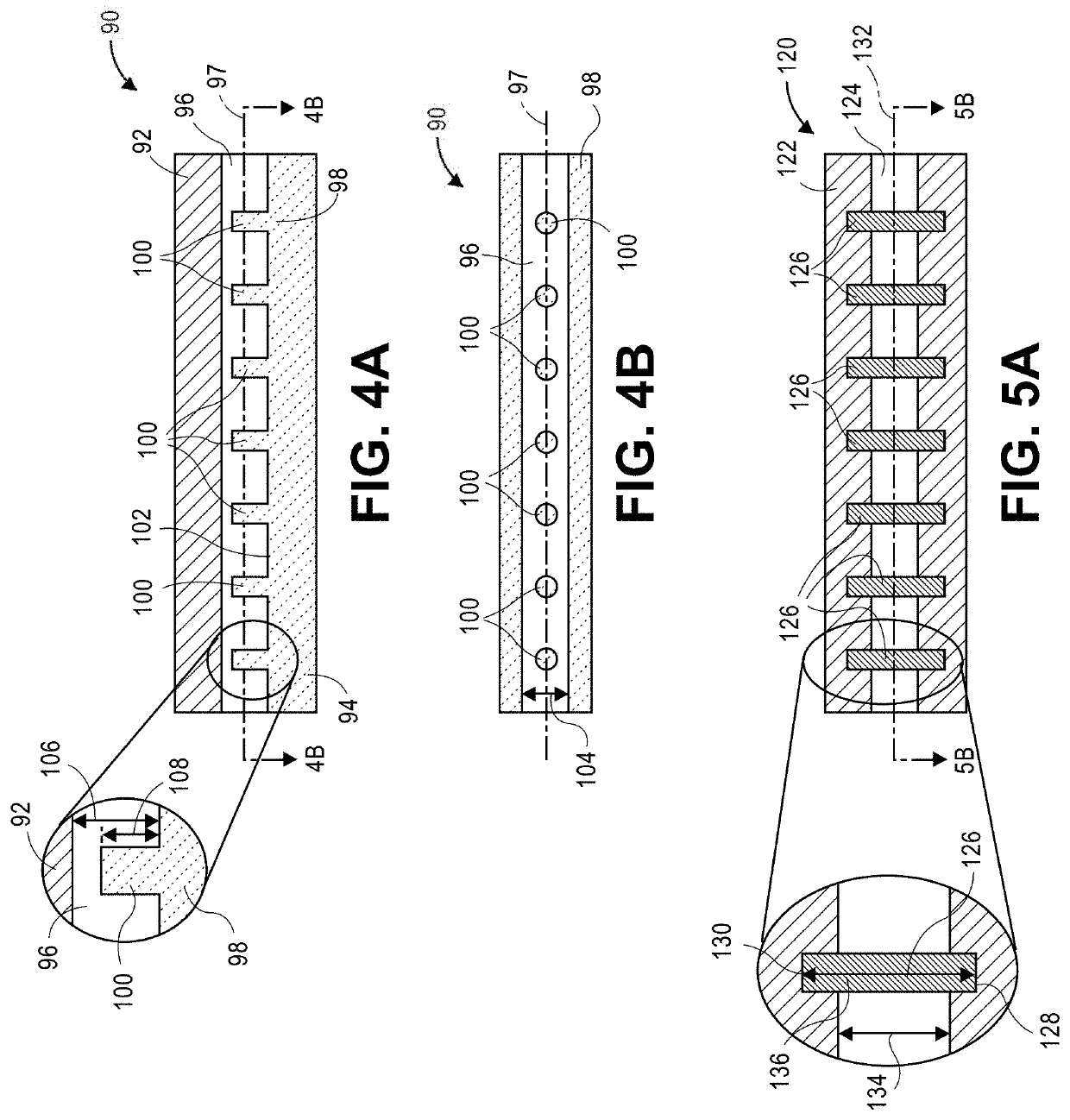Assemblies having enhanced heat transfer through vascular channels and methods of manufacturing assemblies having vascular channels
a technology of vascular channels and heat transfer, which is applied in the direction of indirect heat exchangers, lighting and heating apparatuses, laminated elements, etc., can solve the problems of reducing the heat transfer efficiency of the vehicle, reducing the performance and power of the vehicle, and reducing the fuel economy of the vehicle, so as to achieve a relatively low thermal conductivity of the polymer
- Summary
- Abstract
- Description
- Claims
- Application Information
AI Technical Summary
Benefits of technology
Problems solved by technology
Method used
Image
Examples
example 1
Protrusions with Low Conductivity Polymer
[0148]Vascular assemblies A and B each include a polymer having a thermal conductivity of 0.6 W / m·K. Vascular Assembly A includes protrusions as a heat-transfer element (e.g., heat-transfer element 630 of FIGS. 26A-26B). Vascular Assembly B excludes protrusions and does not have a heat-transfer element. When subjected to the heat source 634, a global max temperature of Vascular Assembly A (123° C.) is significantly less than a global max temperature of Vascular Assembly B (261° C.), as shown in Table 2 below. Thus, the presence of the heat-transfer elements has a significant effect on global maximum temperature and heat transfer when the thermal conductivity of the polymer is relatively low.
TABLE 2VascularPropertyAssembly AVascular Assembly BSpreader Thickness0.5 mm0.5 mmPolymer Thermal Conductivity0.6 W / m · K0.6 W / m · KSpreader to Channel Separation0.25 mm0.25 mmProtrusions Present?YesNoProtrusion Spacing2.5 mmNAProtrusion Height1.4 mmNAProt...
example 2
Protrusions with High Conductivity Polymer
[0149]Vascular Assemblies C and D each include a polymer having a thermal conductivity of 5 W / m·K. Vascular Assembly C includes protrusions as a heat-transfer element (e.g., heat-transfer element 630 of FIGS. 26A-26B). Vascular Assembly B excludes protrusions and does not have a heat-transfer element. When subjected to the heat source 634, a global max temperature of Vascular Assembly C (74° C.) is similar, but less than a global max temperature of Vascular Assembly D (79° C.), as shown in Table 3 below. The presence of the heat-transfer elements has a less significant effect on global max temperature and heat transfer when the thermal conductivity of the polymer is relatively high, as compared to when the thermal conductivity of the polymer is relatively low (e.g., as in Example 1).
TABLE 3VascularPropertyAssembly CVascular Assembly DSpreader Thickness0.5 mm0.5 mmPolymer Thermal Conductivity5 W / m · K5 W / m · KSpreader to Channel Separation0.2...
example 3
Protrusion Spacing and Height
[0150]Vascular Assembly E and Vascular Assembly F each include GRIP Metal™ as the thermally-conductive component 626. Vascular Component E includes “Mini” size GRIP Metal™ and Vascular Assembly F includes “Nano” size GRIP Metal™. Vascular Assembly E, which includes larger protrusions having a greater protrusion spacing 640 than Vascular Assembly F, has a lower global maximum temperature (123° C.) than a global maximum temperature of Vascular Assembly F (150° C.), as shown in Table 4 below. Thus, larger, spaced apart protrusions may facilitate a higher rate of heat transfer than smaller, closer spaced protrusions.
TABLE 4VascularPropertyAssembly EVascular Assembly FSpreader Thickness0.5 mm0.5 mmPolymer Thermal Conductivity0.6 W / m · K0.6 W / m · KSpreader to Channel Separation0.25 mm0.25 mmProtrusions Present?YesYesProtrusion Spacing2.5 mm1 mmProtrusion Height1.4 mm0.7 mmProtrusion DiameterHeight / 3Height / 3Global Max Temperature123° C.150° C.
PUM
| Property | Measurement | Unit |
|---|---|---|
| diameter | aaaaa | aaaaa |
| thickness | aaaaa | aaaaa |
| thickness | aaaaa | aaaaa |
Abstract
Description
Claims
Application Information
 Login to View More
Login to View More - R&D
- Intellectual Property
- Life Sciences
- Materials
- Tech Scout
- Unparalleled Data Quality
- Higher Quality Content
- 60% Fewer Hallucinations
Browse by: Latest US Patents, China's latest patents, Technical Efficacy Thesaurus, Application Domain, Technology Topic, Popular Technical Reports.
© 2025 PatSnap. All rights reserved.Legal|Privacy policy|Modern Slavery Act Transparency Statement|Sitemap|About US| Contact US: help@patsnap.com



